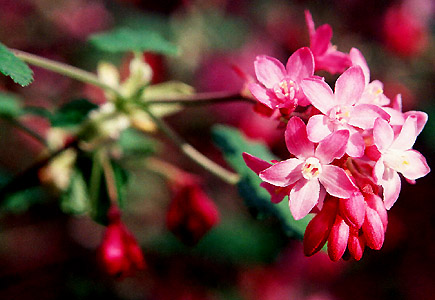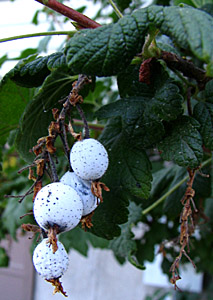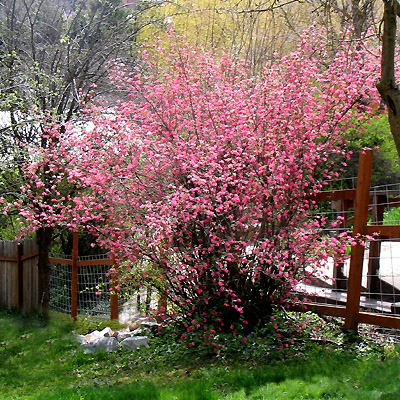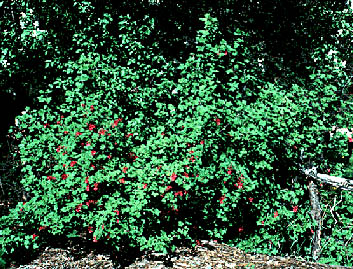-
Water use: Moderate; tolerates some drought.
-
Light: Full sun or partial shade.
-
Size: 6 to 12 feet tall with similar spread.
-
Native Range: This shrub is native in the Pacific northwest.
-
Plant habit: Deciduous, spring flowering, upright, woody shrub.
 
-
Leaves: Dark green leaves are lobed and very textured. Fall color
is not usually noteworthy, as the leaves may simply turn brown before dropping;
some years the leaves will develop some reddish overtones.
-
Flowers: The intricate flowers hang in delicate clusters.
Flowers may be red, pink, or white. They lack fragrance.
 
-
Fruit: Some plants may form clusters of fruit with a heavy wax coating
that leaves them looking bluish-gray.
-
Culture: This shrub is easy to grow. It may get scale insects.
-
Maintenance: Prune this shrub to shape it after flowering by removing
unwanted branches where they originate.

-
Cultivars: The nursery industry has introduced various cultivars
with different flower colors; some cultivars even have doubled flowers.
We have had good luck with Ribes sanguineum 'King Edward VII,'
a
cultivar with red flowers and that stays slightly shorter than most winter
currants.
|




